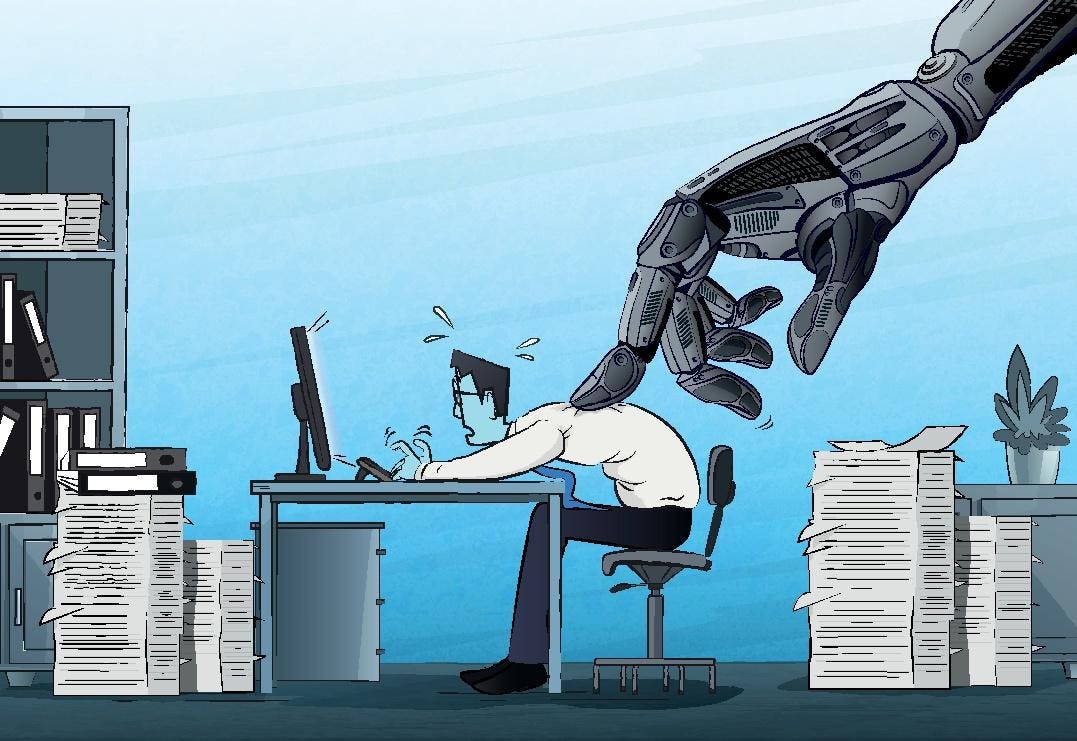AI Acceptance: How Building Curiosity Can Overcome The Fear Of AI
getty
With more than half of Americans saying they are more concerned than excited about AI, it is clear that people fear technology. Some of that fear grows when leading experts share warnings about AI taking over jobs or even posing risks to society. Their fear of AI is not irrational because there are potential issues. However, AI is not going away, and the sooner and better everyone learns to work with it, the more productive organizations will be. In my research on the factors that impact curiosity, fear and technology consistently emerged as two of the main inhibitors and are powerful barriers to learning and exploration. For organizations that want to be innovative, developing curiosity is essential. Building a culture of curiosity that helps people move past the fear of technology, especially AI, can be one of the most important steps an organization takes if it wants to compete in today’s environment.
Why Fear Of AI Needs To Be Addressed Early
getty
Why Fear Of AI Needs To Be Addressed Early
Fear of AI often begins before anyone even starts working with it. When you have Elon Musk saying things like AI is summoning the demon or Stephen Hawking warning AI could spell the end of the human race, it’s unsettling. On a personal level, it is also daunting to think that not only could your entire job change, but you might not have the job you worked so hard to get because AI will now do it. News stories, public debates, and workplace rumors can influence perceptions long before the first training session. Without a clear plan for how AI will be introduced and supported, these perceptions feel like reality and people get spooked. The earlier leaders acknowledge this and address it directly, the easier it is to replace assumptions with understanding. Early conversations create the foundation for curiosity, turning fear into questions rather than avoidance.
How Fear Of AI And Technology Inhibits Curiosity When Left Unchecked
getty
How Fear Of AI And Technology Inhibits Curiosity When Left Unchecked
In my research, technology emerged as one of four major inhibitors of curiosity, along with fear, assumptions, and environment. Trying to learn AI can be even more intimidating when it is introduced without adequate context or support. Even the most tech-savvy professionals can hesitate to use new tools if they believe the learning curve will be steep or if they have had frustrating experiences with past technology rollouts. When people feel overwhelmed, they often rely on status-quo behaviors, which limits exploration. This is why building comfort with technology, including AI, is as important as explaining its purpose. The more confident people feel in their ability to understand and use AI, the more likely they are to embrace it.
Why A Culture Of Curiosity Helps Reduce Fear Of AI
getty
Why A Culture Of Curiosity Helps Reduce Fear Of AI
A culture of curiosity involves creating an environment where exploration feels safe, learning is valued, and experimentation is rewarded. In organizations where curiosity is part of the daily routine, employees approach AI with interest rather than apprehension. They see new technology as an opportunity to discover better ways of working, not as a threat to their current skills. This mindset shift is essential for reducing fear of AI and increasing acceptance.
Leadership’s Role In Overcoming Fear Of AI
getty
Leadership’s Role In Overcoming Fear Of AI
Leaders have significant influence over how AI is perceived within their teams. When leaders openly engage with AI, ask thoughtful questions, and share what they are learning, they set the tone for curiosity. They can also normalize the learning process by showing that it is acceptable to not know every answer immediately. Training sessions that encourage interaction rather than one-way instruction can further reinforce this message. When leaders model curiosity, they give employees permission to explore without hesitation.
Turning Fear Of AI Into Opportunities For Growth
getty
Turning Fear Of AI Into Opportunities For Growth
Every interaction with AI can be an opportunity to learn something new. But at the beginning, people might see learning AI as overwhelming. It is similar to my doctoral students who would look at their dissertation process and feel stressed about having to write potentially hundreds of pages of research. I would kid around with them, saying, “how do you eat an elephant? One bite at a time,” which is obviously corny but gets the point across. If people look at the whole AI elephant, they can get overwhelmed. By introducing AI in small, manageable ways, employees can see how it benefits their work without feeling pressured. This might mean starting with a single AI feature that solves a common challenge or streamlines a repetitive task. As people gain experience and see positive results, their confidence grows. Over time, curiosity begins to replace fear, and AI becomes a normal, even welcome, part of daily operations.
The Connection Between Curiosity And Innovation In AI Use
getty
The Connection Between Curiosity And Innovation In Avoiding Fear Of AI
Curiosity is a driving force behind innovation. When employees are encouraged to explore AI and share their discoveries, new ideas emerge. These ideas can lead to better processes, improved services, and creative solutions that might not have been considered otherwise. For example, a customer service team might experiment with AI-powered chat tools and discover ways to resolve inquiries faster while improving customer satisfaction. A marketing team might explore AI analytics to identify trends they had not previously noticed. A workplace that values curiosity creates more opportunities for AI to be used in ways that support both individual and organizational goals. This not only reduces fear of AI but also maximizes its potential benefits.
Sustaining Curiosity To Keep Fear Of AI From Returning
getty
Sustaining Curiosity To Keep Fear Of AI From Returning
Reducing fear of AI requires more than a one-time effort. Technology will continue to evolve, and with each new development, uncertainty can resurface. Sustaining curiosity requires consistent reinforcement. Regular learning opportunities, peer-to-peer knowledge sharing, and recognition for innovative uses of AI help maintain momentum. When curiosity becomes a habit, employees are better equipped to adapt to change, and fear becomes less of an issue.
Why Overcoming Fear Of AI Is A Competitive Advantage
getty
Why Overcoming Fear Of AI Is A Competitive Advantage
Organizations that address fear of AI and actively promote curiosity are better positioned to adapt quickly to new challenges and opportunities. They can implement AI more effectively, encourage innovation, and attract talent that values growth and learning. In a competitive environment, this cultural advantage can make the difference between leading the market and struggling to keep up. Reducing fear of AI strengthens the organization as a whole. My research shows that fear and technology are two of the most powerful inhibitors of curiosity, and AI impacts both. By intentionally creating a culture where curiosity is encouraged, leaders can help their teams see AI as a tool to explore rather than a threat to avoid. The more curiosity becomes part of everyday work, the less influence fear of AI will have, and the more likely employees will get out of status-quo thinking and embrace innovation.









